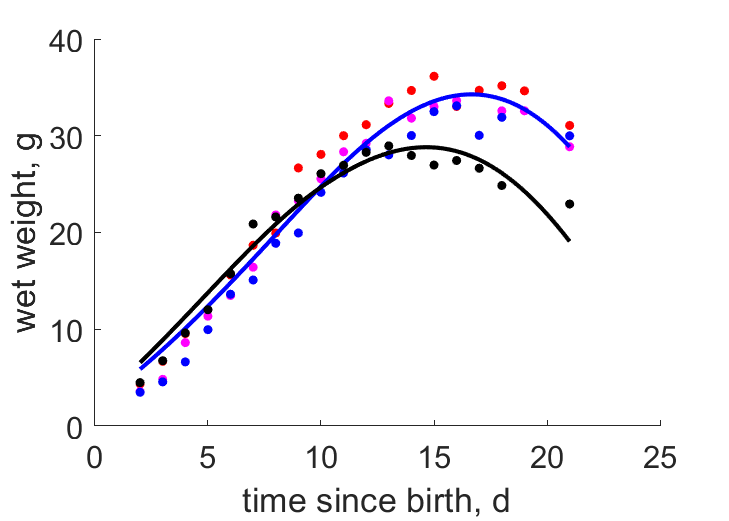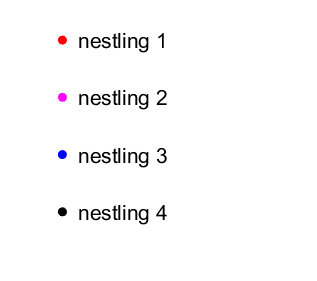Predictions & Data for this entry
| Model: std | climate: Aw, BSh, Cwa, Cwb | migrate: | phylum: |
| COMPLETE = 2.7 | ecozone: THp | food: biCi, biCvr | class: |
| MRE = 0.028 | habitat: 0iTi, 0iTh | gender: Dg | order: |
| SMSE = 0.002 | embryo: Tnwf | reprod: O | family: |
Zero-variate data
| Data | Observed | Predicted | (RE) | Unit | Description | Reference |
|---|---|---|---|---|---|---|
| ab | 13.5 | 14.44 | (0.06995) | d | age at birth | Stey1999 |
| tx | 22.5 | 22.52 | (0.0009872) | d | time since birth at fledging | Stey1999 |
| tp | 67.5 | 65.36 | (0.03171) | d | time since birth at puberty | guess |
| tR | 365 | 365 | ( 0) | d | time since birth at 1st brood | guess |
| am | 3650 | 3656 | (0.001538) | d | life span | guess |
| Ww0 | 3.2 | 3.077 | (0.03839) | g | initial wet weight | avibase |
| Wwb | 2.2 | 2.203 | (0.001488) | g | wet weight at birth | guess |
| Wwi | 30.3 | 31.21 | (0.02995) | g | ultimate wet weight for females | avibase |
| Wwim | 35 | 35.1 | (0.002941) | g | ultimate wet weight for males | avibase |
| Ri | 0.01589 | 0.01559 | (0.01911) | #/d | maximum reprod rate | Stey1999 |
Uni- and bivariate data
| Data | Figure | Independent variable | Dependent variable | (RE) | Reference |
|---|---|---|---|---|---|
| tW |   | time since birth | wet weight | (0.07053) | Stey1999 |
Pseudo-data at Tref = 20°C
| Data | Generalised animal | Rhinopomastus cyanomelas | Unit | Description |
|---|---|---|---|---|
| v | 0.02 | 0.03612 | cm/d | energy conductance |
| p_M | 18 | 524.2 | J/d.cm^3 | vol-spec som maint |
| k_J | 0.002 | 0.02155 | 1/d | maturity maint rate coefficient |
| k | 0.3 | 0.3011 | - | maintenance ratio |
| kap | 0.8 | 0.9213 | - | allocation fraction to soma |
| kap_G | 0.8 | 0.8 | - | growth efficiency |
| kap_R | 0.95 | 0.95 | - | reproduction efficiency |
Discussion
- Body temperature is guessed
- Feeding is intitially reduced after hatch
- Males are assumed to differ from females by {p_Am} only
- mod_1: Pseudo-data point k is used, rather than k_J; Data set tp and parameter t_R are added, the latter replacing clutch interval t_N. Postnatal T is based on PrinPres1991, see get_T_Aves. See further the revision page, theme puberty
Bibliography